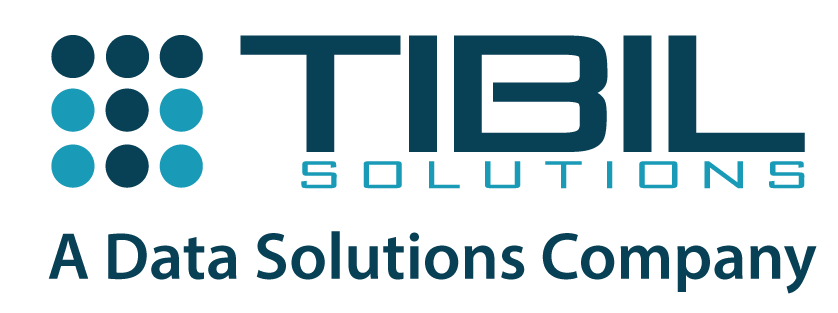
Industrial IoT Analytics– The Shift to Smart Manufacturing
For Industry 4.0, data analytics is an integral part of its operational strategy; enriching everything from vehicles and manufacturing to warehouses and marketing. There is a definite ROI in aggregating previously inaccessible data from the network and the edge, and analyzing it to increase efficiency, monitor performance, save costs and stay competitive.
The power of Industrial IoT data
The Industrial IoT is driven by a universe of sensors that enables accelerated deep learning of existing operations. These data tools allow for rapid contextualization, automatic pattern, and trend detection. Applying this to manufacturing operations allows for true quantitative capture of formerly “expert” qualitative operations. There are several powerful use cases in a digital factory that is enabled by analytics and Industrial IoT technologies, including the ability to:
- Manage machines, processes, and people with speed and agility
- Monitor factory assets in real-time by analyzing historical operational data to predict failure and fix it before it occurs
- Apply Video Analytics to improve processes in real-time
- Quickly simulate and compare the results of retooling an entire product line
Of course, success with these types of advanced analytics and Industrial IoT initiatives does not happen overnight. Employing analytics, sensors, and other related technologies can have a snowball effect on uncovering new efficiencies or business opportunities. For example, data analysis or analytics tools provide a way to more accurately identify potential issues in your processes that might be ideally suited for Industrial IoT initiatives.
Applying Industrial IoT data analytics
SMEs contribute to the health of economies and business productivity around the world. They are critical suppliers, partners and customers in nearly all industries –particularly in manufacturing where they become important intermediate suppliers, selling their goods into global value chains through larger local or multinational companies. That is why it is important that SMEs keep up with their larger business partners and customers in the Industry 4.0 revolution.
Improving productivity is the most obvious and tangible benefit of adopting Industrial IoT technology and the related data, but the benefits for SMEs go well beyond that. Industrial IoT can create value along multiple dimensions such as driving growth through improved products, improved customer service and engineering, better operations and planning, and more efficient factory management and enhanced support functions. A huge variety of devices connected to the Internet and share data through sensors every day, which when effectively collected, analyzed, and stored helps achieve a variety of benefits for SMEs.
Let us consider some of these benefits.
Improved equipment maintenance
Industrial IoT data analytics helps SMEs determine when factory equipment requires maintenance by measuring vibration, heat, and other important figures. Smart equipment can also send messages to operators about potential breakdowns, wear, and delivery schedules. Workers can see exactly how their machines are performing in real-time, and stay updated about potential issues. This not only facilitates regular equipment maintenance but also contributes to predictive maintenance. Sensor data allows maintenance to be scheduled at the optimal time, thus reducing breakdowns and maintenance costs.
Operations optimization and automation
With Industrial IoT sensors and analytics working in tandem, SMEs can automatically control processes that previously could only be tracked manually. For example, they get a comprehensive view of what is going on at every point in the production and maintain a continuous flow of final products, identify bottlenecks in real-time, and avoid defects. Humidity, for example, can have a negative impact on the quality of a paint shop and this can lead to rejects. Therefore, Harley-Davidson has implemented sensors in its paint shop to detect the humidity level. The ventilation fan speed can be automatically adjusted in order to assure a consistent coat.
Customer experience enhancement
IoT-enabled field service can dramatically improve customer experience. Giving technicians access to CRM data from their tablet shows them a detailed customer history. And they do not need to call the office to answer the customer’s questions. SMEs can also build upon predictive maintenance with business data like CRM and EAM. When the machine learning algorithm predicts an asset failure, they can connect to the EAM system and check the warranty. By automatically checking the warranty, they can prevent compromising warranties and reduce maintenance costs.
Data from wearables
We are not talking about data from smartwatches and fitness, but a new breed of industrial wearables. These new wearables promise to make difficult and often dangerous jobs safer and easier. For example, data from wearable gas detection sensors can track employee exposure levels and can then be displayed alongside their work schedule. This helps dispatchers adjust the schedule based on the worker’s exposure. Another use case is for logistics service providers. Sensors can detect driver fatigue and trigger an alarm to stop the driver. This helps improve schedules, routes and safety practices.
Location data
Location data could come from mobile devices, location beacons, GIS systems or even drones. GPS data from a vehicle can be combined with traffic reports to optimize delivery routes in real-time. SMEs could also place track-and-trace sensors on expensive mobile assets that often get stolen or misplaced. A vital IoT data application is using real-time location data to avoid vehicular accidents. Streaming real-time data from location beacons can help prevent fatal accidents. When a vehicle passes a beacon, the IoT application can automatically check whether the vehicle has the correct clearance certificate.
Inventory Management
IoT technology can eliminate the need to physically scan individual parts to get an accurate count or location. RFID chips – easily affordable – can be placed on products and remotely connected for real-time visibility into product locations and quantities. For SMEs manufacturing perishables like food, RFID tech can raise an alert when a product is approaching its expiration date. Optimizing the supply chain is a huge benefit of Industrial IoT data.
The technology of the future
Industry 4.0 is no longer a vision. Best-in-class firms are using analytics and Industrial IoT (IIoT) to make better decisions regarding assets, products, processes, and operations, and it is driving significant returns. IIoT analytics help SMEs get a better understanding of the manufacturing and supply chain processes, improve demand forecasting, achieve faster time to market, and enhance the customer experience. However, considering the scale and the complexity of the IIoT initiatives, successful adoption requires thoughtful orchestration, analytics and management of the tons of data the IoT generates.
Seeking assistance with data management is imperative
Managing data from IoT devices is an important aspect of a real-time analytics journey. This large chunk of data needs to be managed appropriately to reduce complex challenges. To be sure that an SME can handle IoT data demands, they need to build several capabilities such as versatile connectivity and ability to handle data variety, edge processing and enrichments, big data processing and machine learning, real-time monitoring and alerting, etc.
This can be overwhelming for an SME, especially when it is not even in the business of handling data.
Building IIoT data analytics expertise in-house can be challenging; especially for SMEs without the same financial, human resource or technology ecosystem options as larger firms. An Inmarsat study revealed that 72% of businesses have a shortage of people at the management level with experience in IoT, while another 80% reported a lack of skills among employees in IoT deployment. SMEs are wary of unknowingly tying themselves into a platform that may not last the course. That is why engaging an experienced data analytics player becomes critical.
Related Posts
AI Toolbox: Creative Content Beyond ChatGPT & BARD
Introduction: In the dynamic landscape of artificial intelligence (AI), ChatGPT and BARD have garnered significant attention for their capabilities in natural language processing and music composition. However, a rich tapestry of AI tools exists...
Ethical Considerations in Generative AI: Ensuring Fair and Responsible Data Analytics
Introduction Generative AI, a transformative subset of artificial intelligence, is revolutionizing data analytics and machine learning. It empowers machines to generate data, images, and text that mimic human creativity. While the potential of...
Building a Better Future with Digital Public Goods
The world is on the cusp of digitization! In this era of digitization, we have transformed the way we communicate, interact, and access information. It has not only changed our personal lives but also has brought an evident transformation in the...
The Role of Artificial Intelligence in Cyber Security
In an era characterised by rapid technological advancements and increasing digitalisation, the field of cyber security faces an escalating and ever-evolving threat landscape. As cyber threats become more sophisticated, organisations must employ...
TinyML: The Future of Edge AI
Artificial intelligence (AI) has been a hot topic in recent years and with good reason. AI has the potential to transform countless industries and improve our lives in numerous ways. However, as powerful as AI can be, it also requires a lot of...
The Evolution of Federated Learning
Uber settled an inquiry into a data breach that exposed the personal data of more than 5,00,000 drivers in 2016 by paying $148 million. A GDPR breach resulted in a $57 million fine for Google in 2020. On-growing data privacy and data breach issues...
Subscribe To Our Newsletter
Lorem ipsum dolor sit amet, consectetuer adipiscing elit. Aenean commodo ligula eget dolor. Aenean massa. Cum sociis natoque penatibus et magnis dis parturient montes, nascetur ridiculus mus

Company
About us
Careers
Contact
Awards
Blog
Offerings
Strategy & Consulting
Managed Services
Solutions
Digital Public Goods
Solutions
Data Solutions
Industry Solutions






